Our Ugandan road trip to Bwindi Impenetrable Forest National Park began in Kampala, taking us via Lake Mburo and Queen Elizabeth National Park, a detour to Rwenzori National Park before reaching the legendary “impenetrable forest” in 6 days.
According to UNESCO, Bwindi is one of the few remaining large expanses of both tropical highland and lowland forest. The highlands feature steep hills and narrow valleys, with altitudes ranging from about 1,200 to 2,600 meters. Its remarkable biodiversity includes many endemic plant species and iconic wildlife such as the greater primates.
This day our group of 6 Norwegians and one South African drove through Queen Elizabeth National Park, heading south along the border with the DR Congo. We made a short stop at QENP southern tip near Ishasha and got an incredible leopard experience. Continuing south, we basically followed the DRC border, through Kihihi and Bulema, then back along the border before turning south again. We entered Bwindi from the northern side, where the map shows a narrow “bottleneck” between the lowland and highland zones near Bugiri. Our route took us through the Ruhija area in the park’s eastern part, continuing south to its southeastern edge, where we exited towards Nyamabale and eventually reached our destination for the day: Chameleon Hills Forest Lodge at Lake Mutanda—after an epic 11½ hours on the road.
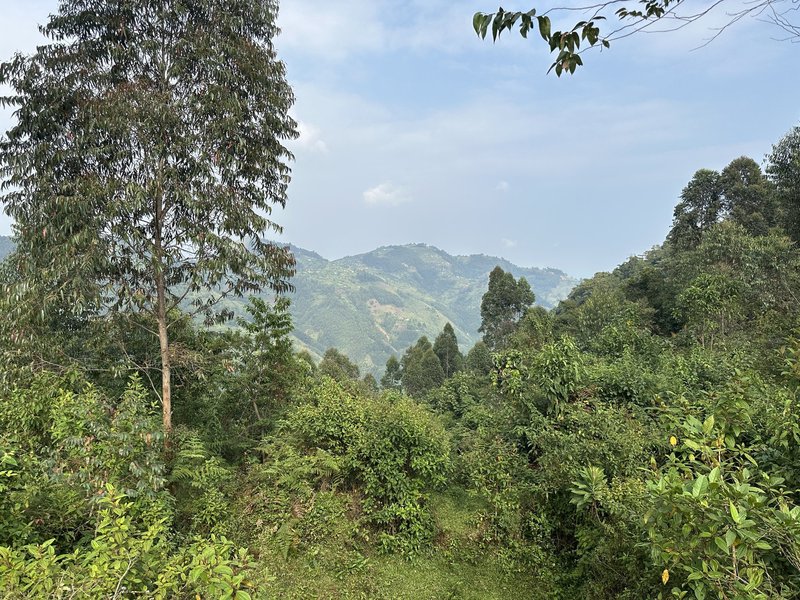
The drive was both challenging and breathtakingly scenic. The road winds through steep hills, dense rainforest, and remote villages, revealing misty valleys, lush greenery, and small tea plantations tucked between ridges. Although the sound of the car engine kept most animals away, we did spot some birds and later, a group of black-and-white colobus monkeys.
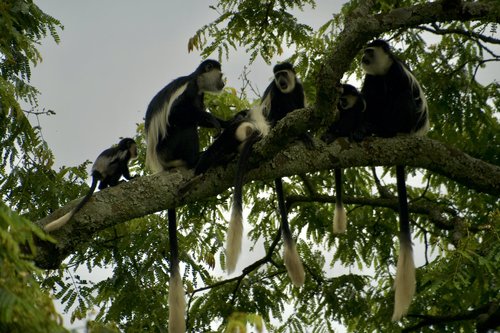
The rough road conditions make a 4x4 vehicle essential, especially in the rainy season, when travel would be extremely difficult.
Since Bwindi’s highland forests are home to the large primates including the world’s largest population of mountain gorillas, a visit to these incredible animals was a must. The next day, we traveled from Lake Mutanda north to the UWA Nkuringo Gorilla Tracking Center. Our group of seven was assigned to the Bushaho gorilla family (which we learned means “pockets”). After a short drive and hike, we met our trackers, who told us the group was nearby. Within minutes we could spot them across the valley, though reaching them it took another 20 minutes of climbing through dense, slippery forest.
The terrain was steep and muddy, making it difficult to stay upright. While positioning for photos, one of our group members got ants crawling down his trousers—prompting what the rangers jokingly called a “gorilla dance”! We quickly learned why long sleeves, trousers, gloves, and tucked pant legs are essential gear here.
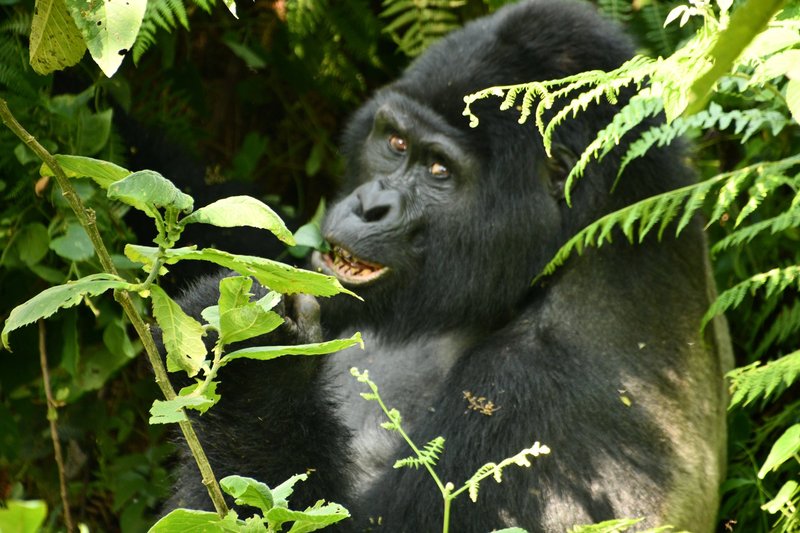
Soon, our excitement peaked when a silverback approached. We had been told to stay calm and still if a gorilla came close, so I froze completely. The massive male walked right up to me, brushed my hip with his shoulder, and continued—completely unbothered. I looked down at his shimmering silver fur, heart racing in disbelief. Did he do that on purpose? Probably—and it became the defining moment of my entire trip.
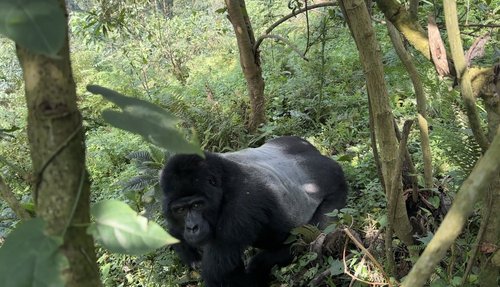
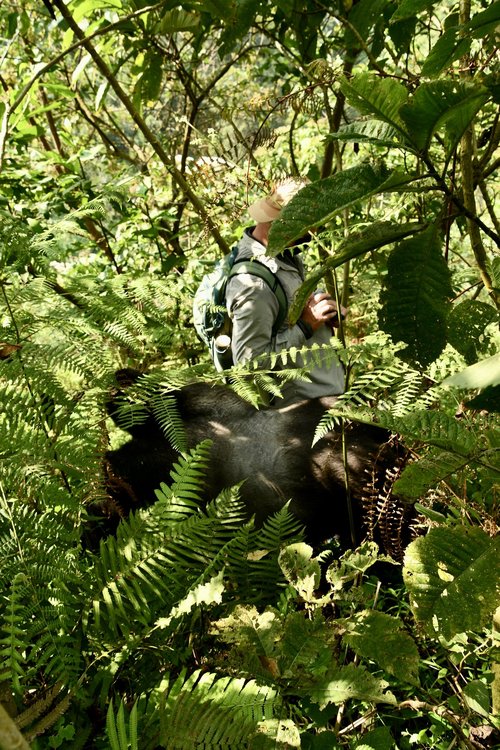
Because our group behaved respectfully, the rangers gave us extra time with the gorillas. So, we found some females with playful young ones, who were a joy to watch. Though the thick vegetation made perfect photos difficult, the moment a silverback’s eyes locked with mine—captured in a brief video—was unforgettable.
We had planned a backup day but didn’t need it. After six intense days full of incredible experiences, a day of rest was more than welcome.
The following day, we crossed Lake Mutanda by boat. During the trip, we heard chilling stories about a nearby uninhabited island where, in the past, young women who became pregnant before marriage were abandoned to die—while the men faced almost no punishment. We were taken to the spot and could se remains with our own eyes. Even just as a show of a skull and some bones the tale sends shivers down your spine. Thankfully, that brutal tradition is long gone.
Back on land, we continued south, crossing into Rwanda at Kayanika, and finally arrived in Kigali, ready for new adventures ahead.
Comments
No comments yet.
